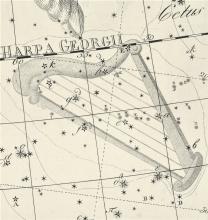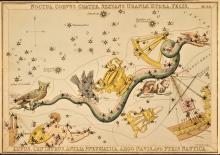Listen to today's episode of StarDate on the web the same day it airs in high-quality streaming audio without any extra ads or announcements. Choose a $8 one-month pass, or listen every day for a year for just $30.
You are here
Spring Stars
The Sun is moving across the constellation Virgo this week. Right now, in fact, it’s not far from Spica, Virgo’s brightest star. We can’t see that, of course, because of Earth’s blue skies. The atmosphere scatters blue wavelengths, creating a curtain of light that blocks the view of the stars.
If you look at the sky at local midnight six months from now, though, you’ll see the configuration of today’s noontime stars — what the sky would look like if the Sun weren’t in the way.
The change in configuration is the result of Earth’s motion around the Sun. As we orbit the Sun, its position in the sky relative to the starry background changes. In six months, it moves half way through that background. The Sun itself isn’t moving — we are.
Whatever the reason, though, there’s a different background for the Sun every day — and a different panoply of stars every night. So each star and constellation returns to the same position in the sky at the same time of year. Virgo and Spica, for example, are best seen in the evening hours during spring — six months after they’re obscured by the Sun.
At this time of year, the evening is dominated by the stars of the “celestial sea” — a group of constellations with a watery pedigree. So as night falls, we’ve got Capricornus, the sea-goat, in the south, with Aquarius and Pisces trailing off toward the east. They’re joined later by other watery constellations — enjoying their season away from the Sun.
Script by Damond Benningfield





